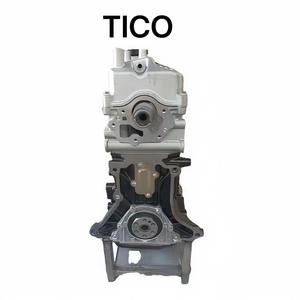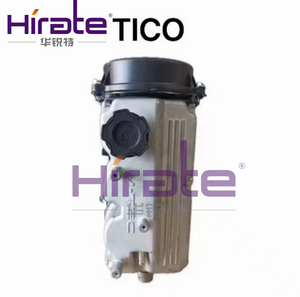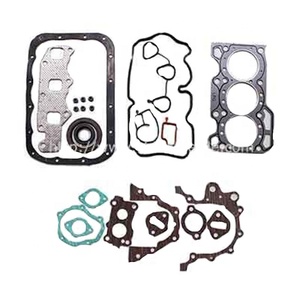(1967 products available)

























































































































































































































An 0.8l engine is a small-displacement engine that is commonly found in compact cars, subcompact cars, and motorbikes. The 0.8l engine generates enough power to move small and lightweight vehicles. The engine is fuel-efficient and meets emission standards. There are different types of 0.8l engines, including:
Inline 0.8l engines
These engines have a number of cylinders that are arranged in a single row. An inline 0.8l engine has four cylinders, which means it is an 0.8l i4 engine. The I4 0.8l engine generates less power. It is suitable for lightweight vehicles and applications that don't require much power. The 0.8l i4 engine is affordable and easy to maintain. For this reason, many car manufacturers prefer to use the engine in budget-friendly cars.
V6 0.8l engines
The V6 0.8l engine has six cylinders that are arranged in two rows of three in a V shape. The V6 0.8l engine generates a lot of power, making it suitable for larger and heavier vehicles, such as SUVs and trucks. The engine can produce a lot of torque, which is important for towing applications. Compared to inline 0.8l engines, V6 0.8l engines have higher maintenance costs.
V8 0.8l engines
The V8 0.8l engine has eight cylinders that are arranged in two rows of four in a V shape. The V8 0.8l engine generates very high power and torque. For this reason, the V8 0.8l engine is commonly used in sports cars and high-performance vehicles. The V8 0.8l engine can quickly accelerate and reach high speeds, making it suitable for racing and performance driving.
Rotary 0.8l engines
Rotary 0.8l engines, also known as Wankel engines, have a triangular rotor that rotates in an epitrochoidal path. The design of rotary 0.8l engines allows for smooth and high-speed rotation, which results in high power output. However, rotary 0.8.1 engines are not very fuel-efficient. The engines also produce a lot of emissions compared to piston-based engines. As a result, rotary 0.8l engines are suitable for applications where high power output is required, such as in sports cars and performance vehicles.
Below are the specifications of the 0.8L engine:
Engine Configuration
The 0.8-liter engines are commonly configured as inline-three or inline-four cylinder engines. The arrangement of cylinders affects the smoothness of operation, power delivery, and overall engine performance.
Fuel Type
These engines are designed to run on regular unleaded petrol or gasoline. The availability of fuel impacts engine performance, fuel efficiency, and emissions.
Fuel System
The fuel system is responsible for delivering fuel from the tank to the engine. It includes components such as fuel tanks, fuel pumps, fuel lines, and fuel injectors. The design and efficiency of the fuel system impact fuel delivery, atomization, and combustion efficiency.
Air Intake System
The air intake system supplies air to the engine for combustion. It includes air filters, intake manifolds, and throttle bodies. The design and efficiency of the air intake system affect the engine's airflow, response, and overall performance.
Ignition System
The ignition system generates sparks to ignite the air-fuel mixture in the engine's cylinders. It comprises components such as ignition coils, spark plugs, and an ignition control module. The ignition system's performance affects combustion efficiency, power output, and fuel economy.
Exhaust System
The exhaust system carries exhaust gases from the engine to the exhaust outlet. It comprises components such as exhaust headers, catalytic converters, mufflers, and exhaust pipes. The exhaust system's design influences back pressure, emissions control, and engine sound.
Cooling System
The cooling system maintains the optimal operating temperature for the 0.8-liter engine. It comprises a radiator, coolant, water pump, thermostat, and cooling passages. Proper cooling ensures engine performance, durability, and efficiency.
Lubrication System
The lubrication system reduces friction between moving parts within the engine. It comprises components such as an oil reservoir (oil pan), oil pump, oil filter, and oil passages. Proper lubrication is crucial for engine performance, longevity, and efficiency.
Engine Control Unit (ECU)
The Engine Control Unit (ECU) is a computerized control unit that manages the operation of the engine. It receives data from various sensors and controls components such as fuel injection, ignition timing, and variable valve timing. The ECU optimizes engine performance, emissions, and fuel efficiency based on operating conditions and driver demands.
Maintaining a 0.8-litre engine is very important. Here are some tips:
Here are ways to choose an 0.8l engine.
Vehicle Compatibility
When selecting an 0.8l engine, buyers need to consider the type of vehicles that will be compatible with it. Not all vehicles may be able to use this engine because it has a unique size and specification. Therefore, check the vehicle's manual or consult the manufacturer to ensure that the vehicle is compatible with the 0.8l engine before making a purchase.
Driving Needs
Consider the driving requirements before choosing an 0.8l engine. If the buyer drives a lot of highways or needs to carry heavy loads, this engine may not be suitable because it is not powerful. For such cases, looking for an engine with more displacement or power is better.
Fuel Type
Most 0.8l engines use petrol fuel. Therefore, ensure the buyer is comfortable with the petrol fuel type before choosing this engine. If the buyer prefers diesel fuel, look for other engine options that work with diesel fuel.
Cost
The 0.8l engine is quite affordable. Before purchasing, buyers need to consider the cost and compare it with other available engine options. Remember that the engine price may differ depending on the brand and manufacturer.
Maintenance and Serviceability
Buyers need to consider the maintenance and serviceability aspect before choosing an 0.8l engine. This engine requires regular maintenance, such as oil changes, filter replacements, and tune-ups, to keep it in good condition. Therefore, check if there are available mechanics or service centers nearby that can provide maintenance and repair services for this engine.
Some 0.8l engine cars have DIY-friendly layouts that allow simple tasks like spark plug changes, air filter swaps, and oil filter changes to be performed at home with basic tools. Always consult the owner's manual first. Here are some general guidelines:
Some tasks are better left to professionals. Repairs involving major engine components, complex timing systems, or advanced diagnostics should be handled by trained mechanics with specialized tools and expertise.
Additionally, modifications that may affect emissions, safety, or warranty compliance should be performed by certified professionals or authorized service centers.
Q1: What is an 0.8l engine?
A1: An 0.8l engine is an engine that has an engine displacement of 0.8 liters or 800 cubic centimeters. It is also called an 800 cc engine. This type of engine is mostly used in small cars. It offers good fuel efficiency. However, the power output is low compared to engines with larger displacements.
Q2: What is the meaning of an 0.8 liter engine?
A2: An 0.8 liter engine means that the engine has a displacement of 0.8 liters. This indicates that the engine draws 800 cubic centimeters of air from the atmosphere every time it completes a full cycle.
Q3: Is an 0.8l engine good for cars?
A3: Yes, an 0.8l engine is good for cars. It provides greater fuel efficiency, especially for short-distance trips. The engine also emits fewer greenhouse gases. However, the engine may not be suitable for carrying heavy loads or long highway journeys.
Q4: What are the advantages of 0.8l engines?
A4: The advantages of 0.8l engines include better fuel economy, lower costs, and lower emissions. Cars with 0.8l engines are cheaper to buy and maintain. The engines are also suitable for urban driving.